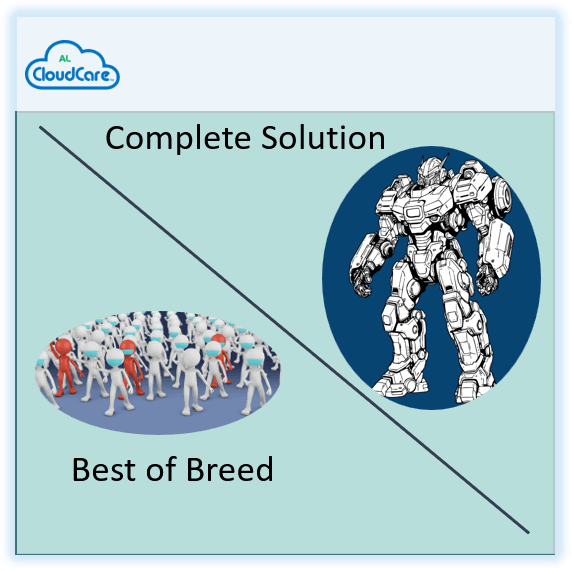The Power of Unified Software Solutions
Why Single Comprehensive Software Solutions Excel in Multiple Care Settings

Why Single Comprehensive Software Solutions Excel in Multiple Care Settings

In today's fast-paced healthcare environment, assisted living communities, IDD homes, memory care facilities, and group homes face mounting challenges in providing quality care while managing operational efficiency. Research across multiple software providers reveals a clear advantage to implementing a single comprehensive software solution rather than piecing together multiple separate systems. This integrated approach offers substantial benefits in cost, efficiency, data management, and ultimately resident care quality.
Cost Efficiency: Beyond the obvious Savings
When comparing solutions like AL CloudCare (starting at just $3.99 per bed per month) with combining separate systems for medication management, billing, and resident records, the financial advantages become evident. Implementing multiple standalone solutions typically requires:
• Multiple subscription fees that quickly add up
• Additional IT infrastructure costs
• Separate training programs for each system
• Increased IT support resources
A comprehensive platform eliminates these redundant expenses while providing predictable, scalable pricing as your organization grows.
Streamlined Workflows Through Integration
Staff productivity drastically improves when information flows seamlessly between functions. For example, when a resident's care needs change:
• Care updates automatically flow to care and compliance modules
• Care activities are monitored and compliance is verified
• Medication changes appear instantly in eMAR
• Billing reflects new care levels without manual data entry
This integrated workflow eliminates bottlenecks and reduces errors that typically occur when information must be manually transferred between systems.
Reduced Data Entry Burden
Staff burnout remains a significant challenge in care communities. Multiple software systems force caregivers and administrators to enter the same information repeatedly across platforms. According to industry research, a single comprehensive platform can reduce administrative documentation time by a significant percentage.
With integrated solutions like AL CloudCare, information entered once propagates throughout the system - resident details, medication records, family contacts, and billing information remain consistent across all modules.
Enhanced Compliance Management
Senior living facilities must navigate complex regulatory requirements that vary by state. Comprehensive platforms maintain compliance across all operational areas:
• Coordinated assessment and care planning documentation
• Accurate medication administration records
• Proper incident reporting and resolution tracking
• Complete audit trails across interactions
• Easy consent management with electronic signatures
With multiple disconnected systems, compliance gaps frequently emerge at the intersection of different platforms.
Improved Resident Experience
Perhaps most importantly, comprehensive software solutions directly enhance resident care quality. Family members receive consistent information through portals, caregivers have complete resident histories at their fingertips, and leadership teams gain holistic views of operational performance.
Leading platforms now incorporate artificial intelligence assistants, like AL CloudCare's "Alvin," that help staff maximize software capabilities even without extensive training.
The Bottom Line
While implementing separate best-of-breed, ‘Silo’ed solutions might seem appealing for specific functions, the cumulative disadvantages in cost, efficiency, data integrity, and care quality make this approach increasingly outdated. Modern comprehensive platforms deliver specialized functionality while maintaining the critical integration that drives operational excellence and superior resident care.